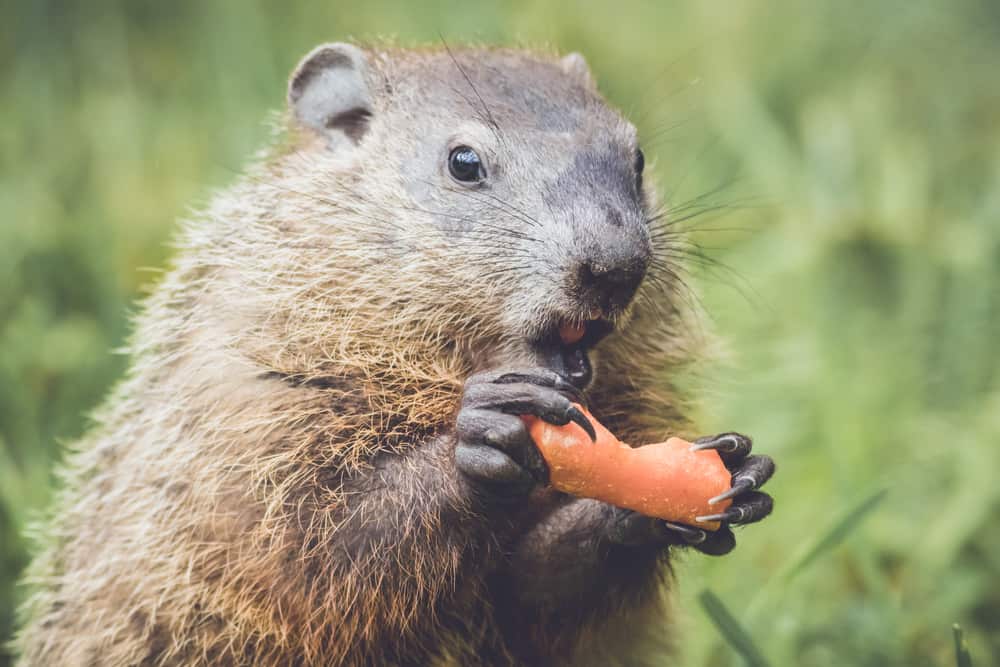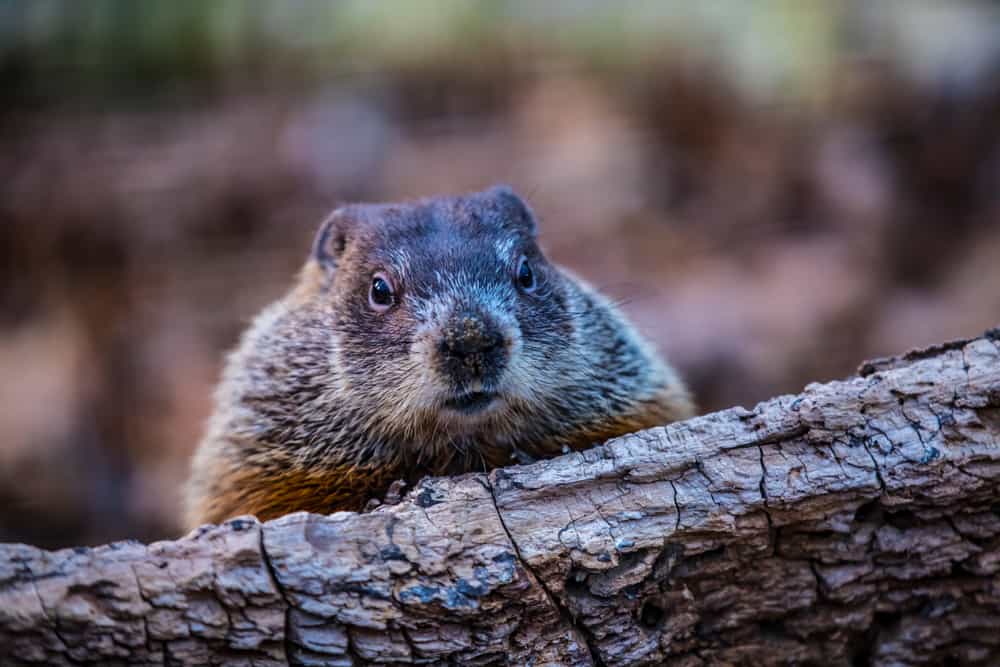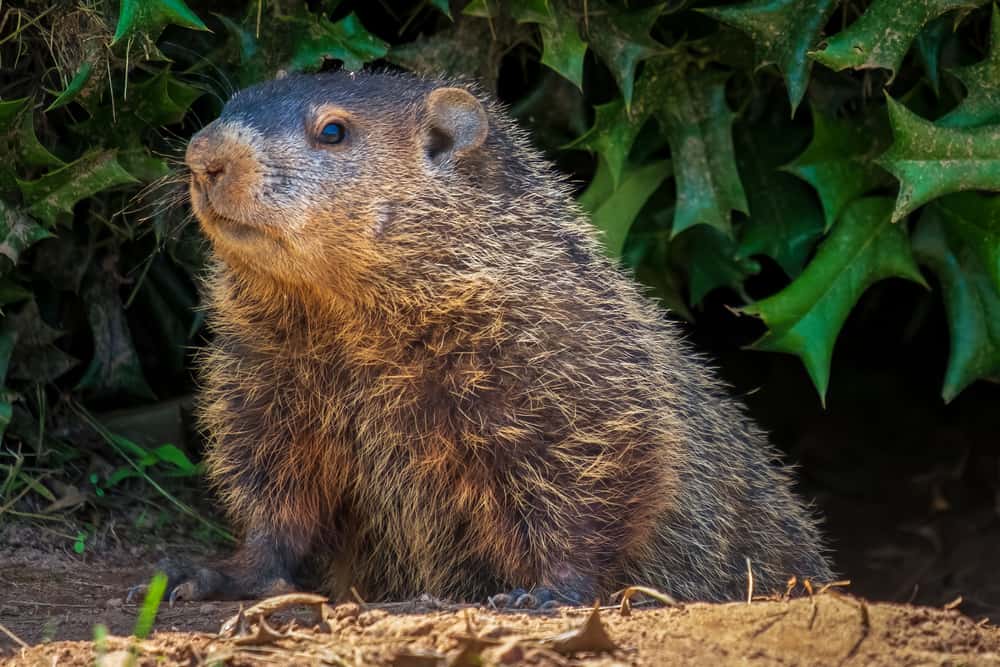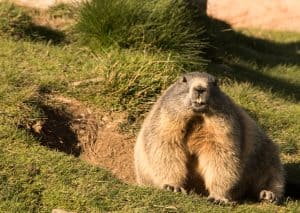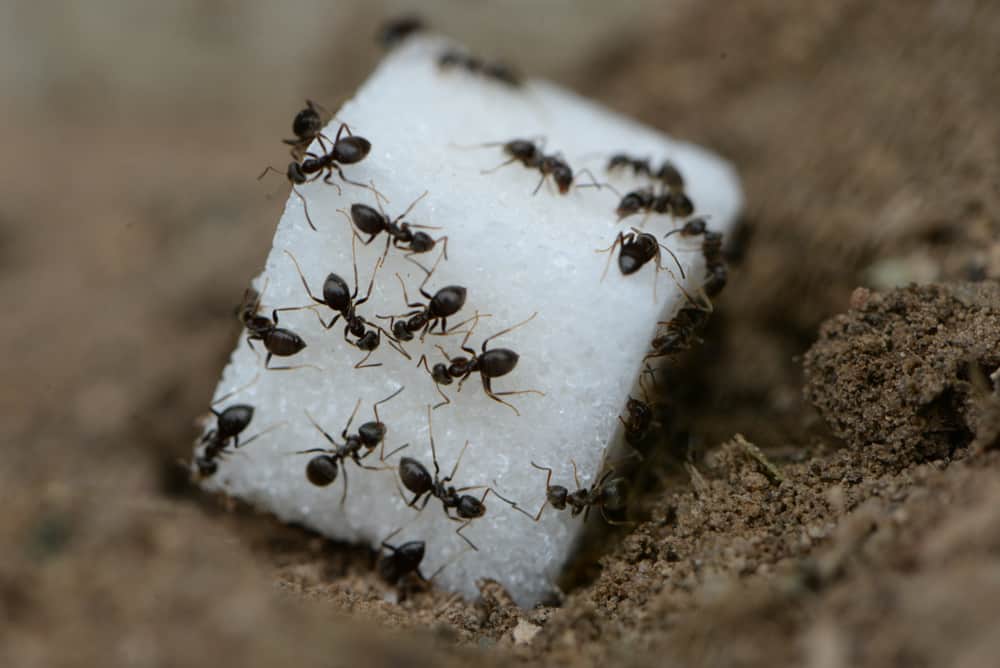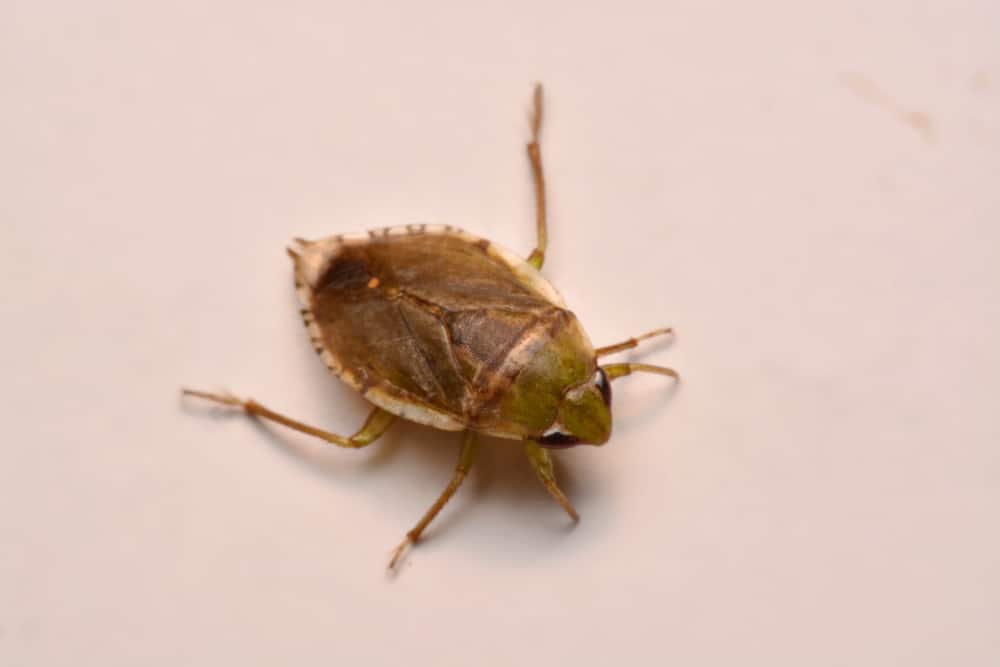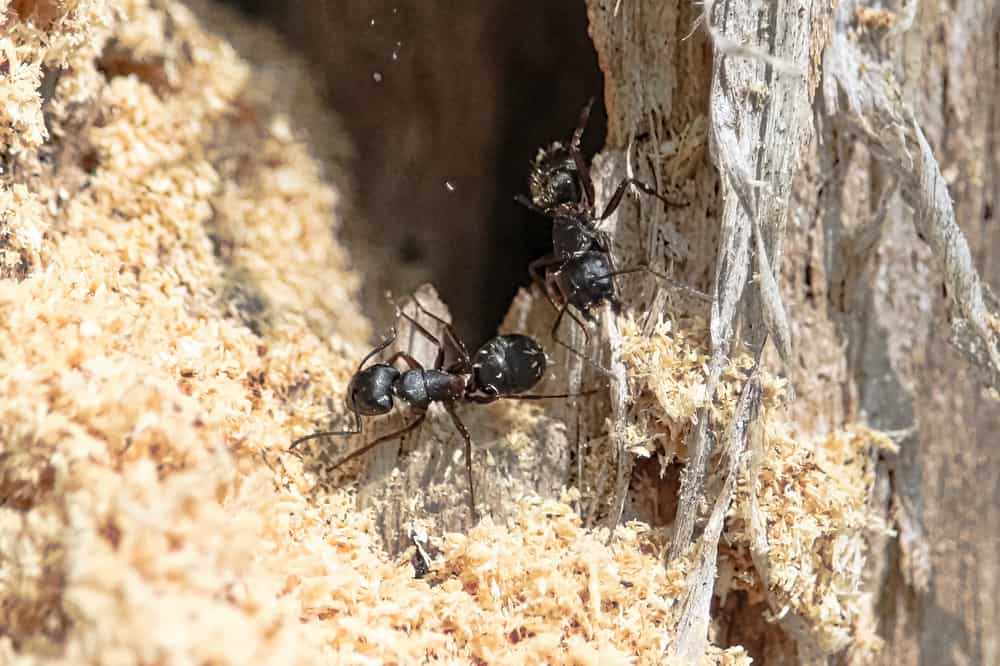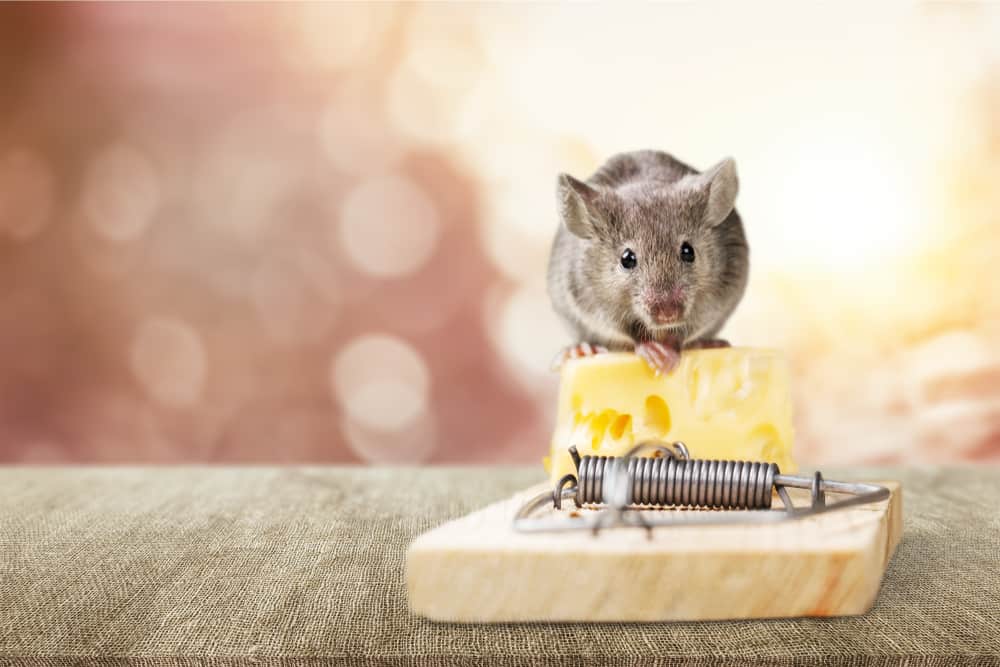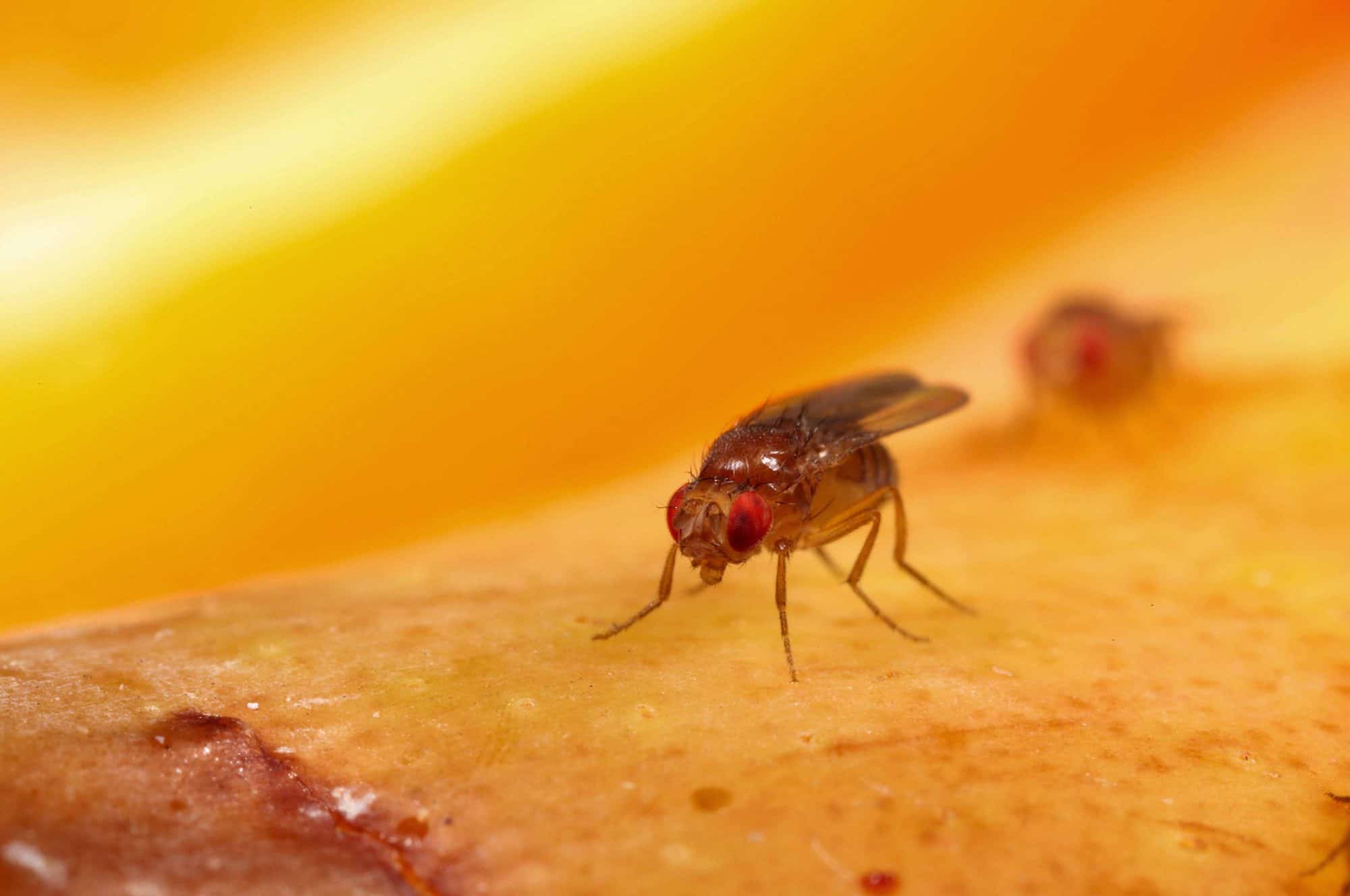Page Contents:
How to Get Rid of Groundhogs
More than an annoying nuisance, groundhogs can be a real threat to the ability to build a home garden.
Their burrowing can cause damage to plants and foundations underground, and they may even feed on your garden’s contents.
Generally, the best practice when it comes to getting rid of groundhogs is preventing them from moving in in the first place.
You can do this by making the soil repellant to groundhog burrowing and nesting.
Adding strong agents like hot sauce, red pepper flakes, lavender, or garlic into the soil along with the urine of predators like foxes or coyotes will make your garden rather uninhabitable for prospective groundhogs.
In addition, certain growing plants will also repel groundhogs.
Like Euphorbia lathyrus.
It’s also recommended to own a pet dog and let them regularly wander the property where your garden or shed is located. The scent of the dog will deter groundhogs from making an underground home.
However, if all this fails, it’s good to know a few tricks to kicking out your unwanted tenants. You can use a gas cartridge by tossing it in an existing burrow for a quick eviction.
Another great way to get rid of groundhogs permanently is to install adequate fencing, especially electrified fencing. Fencing around the area from which you wish to exclude groundhogs should run two feet deep into the ground.
If you already have an existing fence, make sure it’s up to these specifications. It’s also not difficult to electrify an already existing fence.
You can also use live pest traps to catch any groundhogs currently too close for comfort. these creatures can be lured with sweet, fresh fruits or vegetables like strawberries or corn.
The only caveat to this is that some states have laws about trapping groundhogs, so just check with the state of your residency before endeavoring to trap them.
Another trick..
(If you have the space for it).
Is to lure the groundhogs to live in another location with a tastier food source. You can do this by strategically planting their favorite foods, such as clover and basil, away from your garden or shed.
When groundhogs have vacated a tunnel system, it’s important that you fill it in. Use a tunnel fill to expand inside the burrow, preventing a land collapse and as well as the possibility of a new tenant moving into the empty real estate.
How to Get Rid of Groundhogs Under a Shed
Groundhogs burrowing under a shed or building can be a major problem. They make the ground underneath a structure uneven and unstable, setting you up for a host of issues in the future.
If you realize you have groundhogs underneath a shed or other structure, you should first close off the entrance to the burrow with a barrier like galvanized steel mesh, then fill in the tunnels.
You can also install the steel mesh around the entirety of the structure, preventing future burrows from occurring.
What Does a Groundhog Look Like?
Groundhogs are grayish brown in color, evolved to blend in with the ground and the soil. They are furry and sleek, their bodies perfect for traveling down homey burrows. These animals are well-built, with short legs and a mostly long body. Groundhogs also have smaller eyes and ears that they use to detect predators. They can weigh up to 15 pounds but typically stay between the 6 to 9 pound range.
Their faces are reminiscent of an oversized squirrel, minus the fluffy tail. Groundhogs have tails, but they are short and slim.
They maneuver on all fours, but you may spot them sitting up when they nibble on something.
How Long do Groundhogs Live?
Groundhogs in the wild usually live between 3 and 5 years.
They give birth underground in the springtime, and the babies usually stay inside until they are older, not exiting the burrow until July or August.
This timing may inform your decision to evict your groundhog inhabitants.
Gophers Vs. Groundhogs
Groundhogs and gophers can be mistaken for each other, but they are actually quite different.
While they are both small, brown burrowers, groundhogs are much larger than gophers. Groundhogs generally weigh 10-12 pounds, while gophers come in at about 2 pounds.
In terms of diet, groundhogs are less picky and will eat anything from insects to plants to small animals. Gophers primarily feed on plant roots or stems. Both animals can cause damage to lawns, gardens, and crop fields but in varying ways.
In addition, groundhogs are herbivores, meaning they only eat plant matter. Gophers are omnivorous, like other smaller rodents.
Lastly…
Groundhogs typically dig large burrows that can destroy the landscape while gophers create a series of small mounds that can form a line or a cluster.
Woodchucks vs. Groundhogs
It’s a misconception that groundhogs and woodchucks are different animals.
They are actually the same species.
While the terminology’s exact history isn’t known for sure, it is understood that the word “woodchuck” is a European colonist’s understanding of a Native American term.
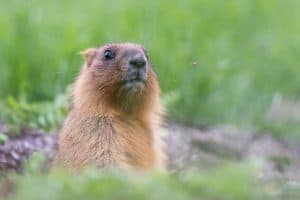
It is thought to descend from the Algonquian or Narragansett word “wuchak,” though some contend that it may have Cree or Ojibwe origins.
Other vernacular variations for this animal include whistle-pig, thickwood badger, and the Canada marmot.
No matter what you call them, these animals are a bother to many gardeners and homeowners alike!
Are Groundhogs Dangerous?
On their own, groundhogs aren’t really dangerous to humans anymore than any 10-pound mammal might be.
They’re fairly docile, and will only react if they feel threatened or if they’re protecting babies so they’re more likely to avoid humans than to approach them.
It’s possible that they may be carrying certain diseases, so it’s best not to engage a groundhog if you stumble across one.
Just treat it like a wild animal and it will leave you alone. However, they can still be a nuisance because they will dig burrows in yards and eat garden vegetables.
Keep in mind that Groundhogs don’t hibernate, so they’ll remain active during the winter months and can cause even more damage to your property if you don’t take steps to remove them.
